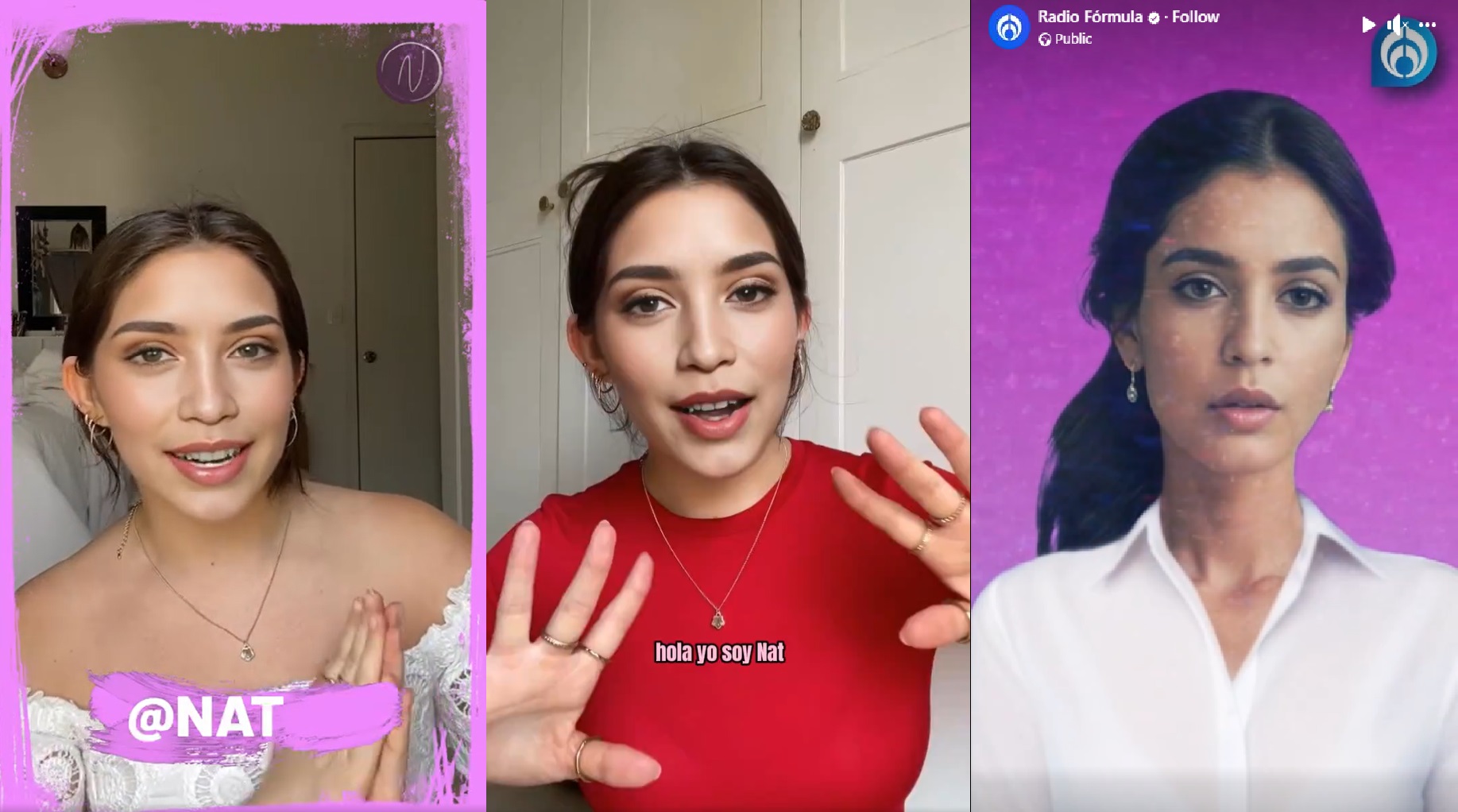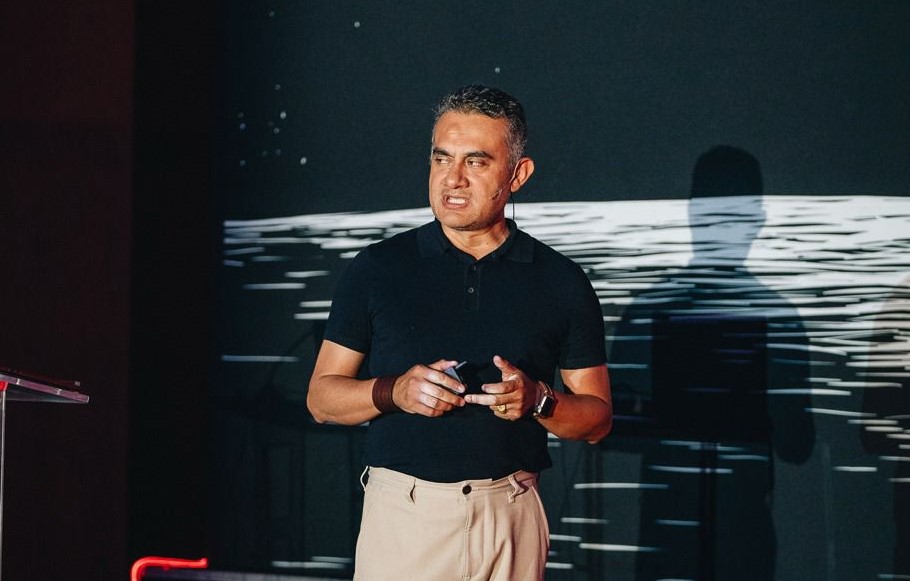Meet NAT, the AI-generated presenter offering soft news to Mexican audiences

NAT in her current form (first two images from left to right) and the first iteration of NAT (image on the far right).
This article is part of a five-part series on AI and the future of audio. The entire series, which includes pieces and short podcast episodes, can be found at this link.
At first glance, this young woman looks like and speaks like the myriad of other content creators online offering entertainment, culture, and beauty news. And yet she has been meticulously created and curated by Grupo Fórmula, one of Mexico’s leading broadcasting groups. Her name is NAT and her creators claim she is the first AI news presenter in Latin America. They created her to attract young audiences.
As part of our series on AI and the future of audio, I spoke about NAT with Oswaldo Aguilar Castro, Director of Technology and AI Infrastructure at Grupo Fórmula. Our conversation was edited for clarity and length.
Listen to our 10-minute podcast episode
Q. What is NAT’s role within Grupo Fórmula?
A. Today NAT presents entertainment news. At the beginning, she presented general good news, but later we realised that this kind of content was too broad. We wanted to have a more loyal and faithful audience so we focused on entertainment news. Later, we created another female character named SOFI who is in charge of political news. Both of them are performing pretty well because the audience is very focused in both cases. For example, NAT has more than 13,000 followers on Instagram whereas SOFI has had various videos go viral. Both have videos with hundreds of thousands and even more than one million of views.
Q. What prompted your newsroom to have AI news anchors in the first place?
A. Grupo Fórmula is one of the biggest media companies in Mexico. We wanted to move from the traditional radio and traditional television ecosystem to the streaming business. We wanted something to connect with young people so we discussed the possibility of creating a news presenter using AI.
Q. What kind of technologies did you use to train these AI avatars?
A. At the beginning, we used platforms from third party providers. Later, we created our own technology using deep learning. Some of the algorithms we use are running on Amazon Web Services. But we developed our own technology and we have our own team of engineers, creators and designers working on NAT and all the other avatars we already have.
Q. Who are the AI news anchors that you have at the moment?
A. The first one was NAT. The second is SOFI, who focuses on political news. We have a male avatar named MAX and he presents sports news. The audience for him is smaller, but we think it's because he is a man and not a woman. We also have other avatars for our [corporate] customers.
We try to present at least five or six news stories every day with each avatar. The team in charge of all of this is really big. People think that the use of AI avatars means losing jobs, but it's quite the opposite. For example, only for NAT we use a team of five people that works through the whole process. It is not only the creation of the news stories, but all the post-production work. It's really complicated and the team for all of this is really big.

Q. So you're saying that anchors, reporters, and those in the news business should not fear for their jobs at the hands of these AI anchors?
A. No. For example, we have some of the most important news presenters in Mexico. We don't plan to replace them. The news stories that NAT, SOFI and others present are small stories and very focused towards young people who don’t connect well with the old-style newscast. We are looking to connect with these people by using this technology.
Q. How have audiences reacted to NAT, SOFI and MAX? Would you say that you have been successful in what you wanted to achieve which is bring young people to the news?
A. It's a process. We need to educate people to let them know that the final step of each news story is overseen by humans. This means the information is precise, it’s not fake news. So far it’s a very successful project, but we need to work hard every day to educate our audience.
Q. What other AI projects are you looking to develop?
A. The next step in the evolution of NAT is having a conversational version of her, which is under development. It works pretty well so far and we only need to solve small issues we have with the video rendering. The conversational version of NAT is almost ready. We will not use this for news, but for vertical video ‘totems’. For example, a vertical screen in the lobby of a bank, where you will be able to ask the avatar questions in real time about applying for a house loan or a credit card.
Another project we are working on is an operational news website to produce news with AI with a very high rate of news production. In this case, the AI will search for news in every part of the world, decide what news stories are important and produce a version to put on the website. Through this system, we will be able to produce around 200 articles per hour. As always, the last step, the verification, would always be made by a human. A human reads the pieces and decides whether or not to publish them.
In every email we send you'll find original reporting, evidence-based insights, online seminars and readings curated from 100s of sources - all in 5 minutes.
- Twice a week
- More than 20,000 people receive it
- Unsubscribe any time
signup block
In every email we send you'll find original reporting, evidence-based insights, online seminars and readings curated from 100s of sources - all in 5 minutes.
- Twice a week
- More than 20,000 people receive it
- Unsubscribe any time





